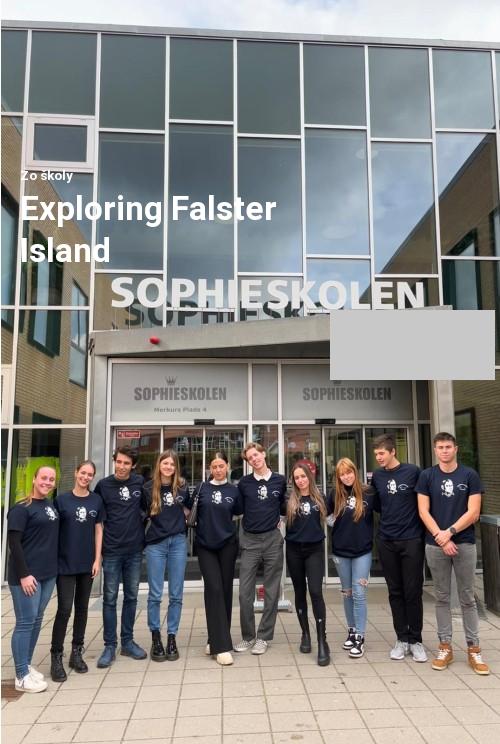Exploring Falster Island
13.12.2022 19:57
Zo školy
Autor : Hedviga Hlavnová, Gymnázium Ivana Kupca, Hlohovec
We started our tour around the southern coast of Denmark in our town Marielyst, where we could see a monument representing the climatic problems in the area in 1872. At that time, huge waves flooded the entire east and south coasts. Less than 200 years ago, where we stood was completely under water.
After exploring a piece of our history in Marielyst - the town where we were staying, we continued our journey to the south coast, where the majestic Lighthouse and the southernmost point of Denmark - Gedser Odde, are. We visited a museum there, which brought us closer to the history of military acts and industrial activity at the sea. We heard the legend about a small yellow bird and an eagle who fight over who can fly the highest. A small yellow bird won because it was smarter than the eagle. He also became a symbol of Denmark. Then we walked along the beach and tasted the cabbage and sweet fruits that grew on the beach.
Our next stop was a place in the south-east of Falster called Corselitze Forest. The name comes from the Manor house Corselitze , which was built in 1777 by Johan Federik Classen. It is a large mansion and at the same time a farm but at the moment there are no animals . There are many other farms nearby. On the coast there is a small party house, which is part of Corselitze, and the owner of Corselitze used it for celebrations or lunches with the family. This place was really amazing.
After a small snack, we moved to the nearby forest, where Halskov Vænge is located. In this place, we visited an ancient forest in which the ancient enemies Yeda of Nordic Gods are buried. Their graves were surrounded by rocks, the larger the rocks, the higher their position was. Everywhere we looked we saw stones of different sizes. There were about 80 of them. Everything has been preserved in its original state because the farmers have protected this area from industrial activity. During the walk, we tasted the nuts that grew there and also the plant, which looked like a four-leaf clover and tasted like a lemon.
Hesnaes is a small fishing village that was our next stop. In the past, this village was mainly used for fishing, but now fishing has almost completely disappeared from the southern coast of Denmark, as has it from Hesnaes. There is a harbour in which are small fishing boats but it is mostly used for recreation during the summer months. We visited a bakery and a café there. It was a lovely cosy place to relax.
Our next stop was Stubbekøbing. It is a small town located in the northeast of Falster and has a population of about 2000 inhabitants. We visited the square, which is located near the harbour, and we had the opportunity to see the church, which was built in 13th century. The headteacher of the primary school then told us the stories connected with this town.
Our last stop that day was the town Nykøbing, where we spent probably the most time of our stay. All the schools we visited are in this town. During this tour, we visited the church on the square. It was charming and I was most impressed by the boats which were hanging from the ceiling. We walked around the town and our final stop were ruins of the wall that once surrounded this town. Her remains are still found in the houses of this town . We ended the evening with a delicious dinner in a restaurant next to the sea. It was an unforgettable day.
